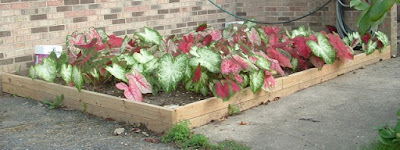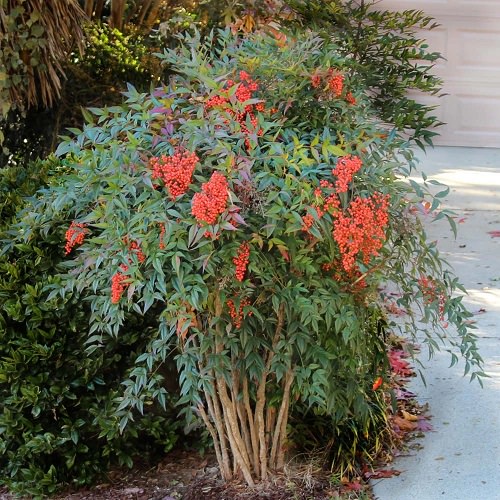Why do I keep getting involved in these projects that are nearly beyond my ability? It is easy to plan things, I suppose, underestimating the physical work required. Back in September, I ordered enough tulip bulps to fit 9 each into 27 cages. Seemed like there was plenty of time...
(Some of this may have been previously mentioned)...
But then I learned that the bulbs wouldn't be shipped until early November. So no point in doing anything before then. (coff, coff) Well, yeah, I SHOULD have made all the cages before then, but I thought that would only take a day. I mean, I have good metal snips and a couple of metal blades for my jigsaw. It should be like cutting cardboard.
WRONG! The first cut into the wire mesh bends the cut wire and those grab the snips. And the wire mesh is so flexible, it just vibrates along with the jigsaw blade to no effect. So each wire in the grid along the cutting path has to be individually snipped from straight down. I counted once and each cage required 277 snips! After 4 of those cage cutouts (and forming the cutout into a cage) my hands started cramping. It took a week to make 20 cages, and at that point I decided I better plant some and see how well they worked.
Well, digging the holes for the cages couldn't be all that hard, right? 12'x14'x10' deep. I knew I was in trouble at the first stomp on the spade. Now, this is a 100% metal spade with a newly sharpened flat blade. Roots, rocks, clay. I had to pound in an outline of the cage, use my leverage fork to break up the inside portion of the hole-to-be, pry out rocks, axe roots, and shovel out the soil one level at a time. The clay stuck to the shovel and had to be knocked off. For every shovelful I scooped out, I had to do several different things! Each cage planting took 30 minutes of hard work.
Best I could manage was 3 holes a day before I was exhausted. I can still do that kind of work at 65, but I don't think I would have done much better at 35. Back was sore, legs were sore, hips were sore.
But just digging the hole is only half the work. The soil below the hole had to be loosened so hole wasn't just a smooth clay bathtub and so the bulb roots could penetrate. Tnen I had to sprinkle in some organic bulb fertilers and mix in in the loosened bottom. Then I had to add some 1/2 compost 1/2 topsoil blend I bought a trailerload of at a landscaping place and mix in more fertilizer. Then place the cage on the bottom and add more of the compost blend (you don't want the bulbs ON the wire mesh).
Then set the bulbs in the cage in a way that looks "natural" (If there is anything less "natural" than this whole process, I can't imagine it), then fill up he cage with for blend (for good drainage). Then add another couple inches of blend over the top and rub it around to make sure there was no air space in the cage. Then shovel some of the removed soil back on top slightly higher than soil level to allow for settling.
As a final gesture of organization, I bought a package of styrofoam plates to use as placers, wrote the name of the bulb (I have 4 varieties of tulips) on the plate with a marker, and stuck the plate over the spot with a 10" metal tent peg.
That's ONE cage of 9 bulbs...
Then because it has suddenly become randomly rainy lately, I had to cover the entire area with a large sheet of plastic (which I have) so the entire area wouldn't become a sea of mud. Naturally, with the rain comes wind, so I had to surround the perimeter with rocks. Which weren't enough, since the plastic was blown loose each of the first couple tries. I finally had to resort to using 12' sq paver stones and REALLY large rocks and old pipes etc to hold it down.
And since the plastic cover got blown loose the first couple of times and I had to let the soil dry some (and some days when the plastic STAYED on after that, it rained all day so I couldn't really do any work there anyway).
So here I am in late December, having planted only 12 of the 20 cages. And everytime I do, I have hand-cramps a couple hours later (naturally, just the time I am trying to prepare dinner). Muscle rub creme helps, as does an aspirin, but only about 30 minutes after they start. Meanwhile, I'll be cutting up veggies and meat, and my fingers just lock into place around the knife handle or cooking pot handle and I actually have to pull them off.
ARGGHHH! I would worry more, but that only happens after a day of hard tool use. But it still is really annoying.
I've gotten better at the process. Between the spade, the shovel, the leverage fork, and the post hole digger, I can get the hole dug out a bit easier and faster. The spade defines the outline, the leverage fork breaks up the soil inside the outline, the shovel scoops out the loosened soil, and the post hole digger takes up the lower level of soil better. But, mainly, switching tools uses different muscles so I don't get sore so fast. I have it down to 20 minutes per planting a cage start to finish.
Fortunately, we don't have freezing temperatures forecast again until January. But therein lays a problem. More about that in 2 days!


































